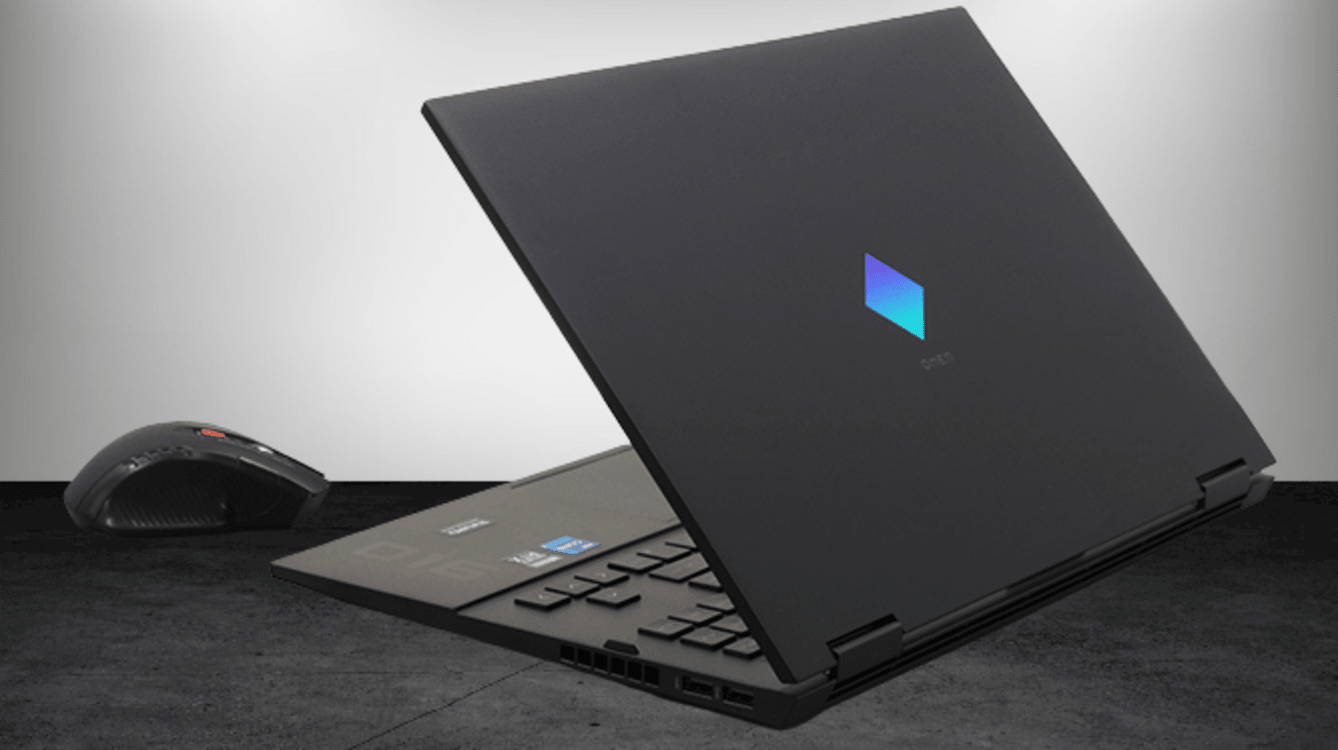
Review of the HP Omen 16: HP’s prior Omen 16 only recently entered our testing lab, but component changes never cease. This gaming laptop has already been refreshed with Intel’s 13th generation processors and Nvidia’s GeForce RTX 40 series GPU.
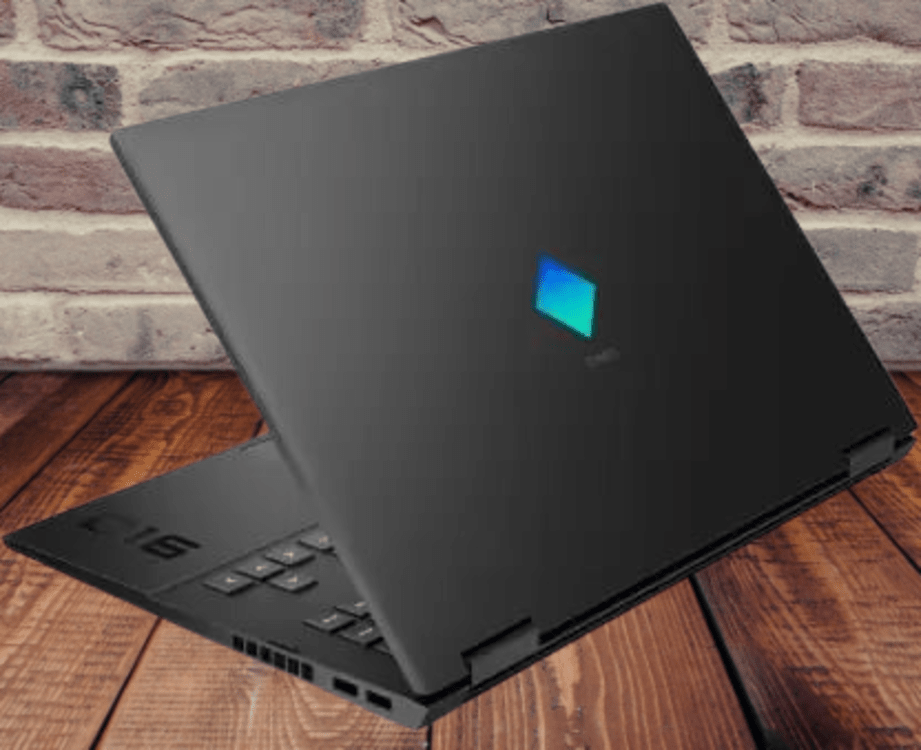
New Omen 16 starts at $1,149.99, and our test unit with Intel Core i7-13700HX, GeForce RTX 4080, 32GB RAM, and 2TB solid-state storage is available at a higher price of $2,819.99. As you’d expect, these components make it a powerful gaming machine, but the Omen lacks in design or performance and doesn’t stand tall against other premium-priced notebooks like the Lenovo Legion Pro 7i Gen 8. A more affordable Omen 16 configuration might fit well in certain situations, but this model isn’t at the top of our gaming recommendations.
Designed to mix in:
HP aims to give its Omen a distinctively compact look with its design, so unless you’re into flashy and attention-grabbing designs, this may not be for you. What you see is what you get: a clean and compact black rectangle, adorned with just a few glossy black text logos (the lid says “OMEN,” and number 16 on the corner of the keyboard deck). The changes aren’t significant, but you’ll notice some differences from the Omen 16 seen earlier this year.
None of them are negative for me. Finally, the black is getting slimmer, and Omen’s trim style makes it appear smaller than many 16-inch laptops. Advancements in design and consistently thinner screen bezels have made it possible to fit large displays into smaller chassis over the past few years.
For the record, HP’s measurements are 0.93 inches by 14.5 inches by 10.2 inches (HWD), and it weighs 5.4 pounds. This size means it will fit comfortably in most bags without the jumbo footprint of most large-screen laptops.
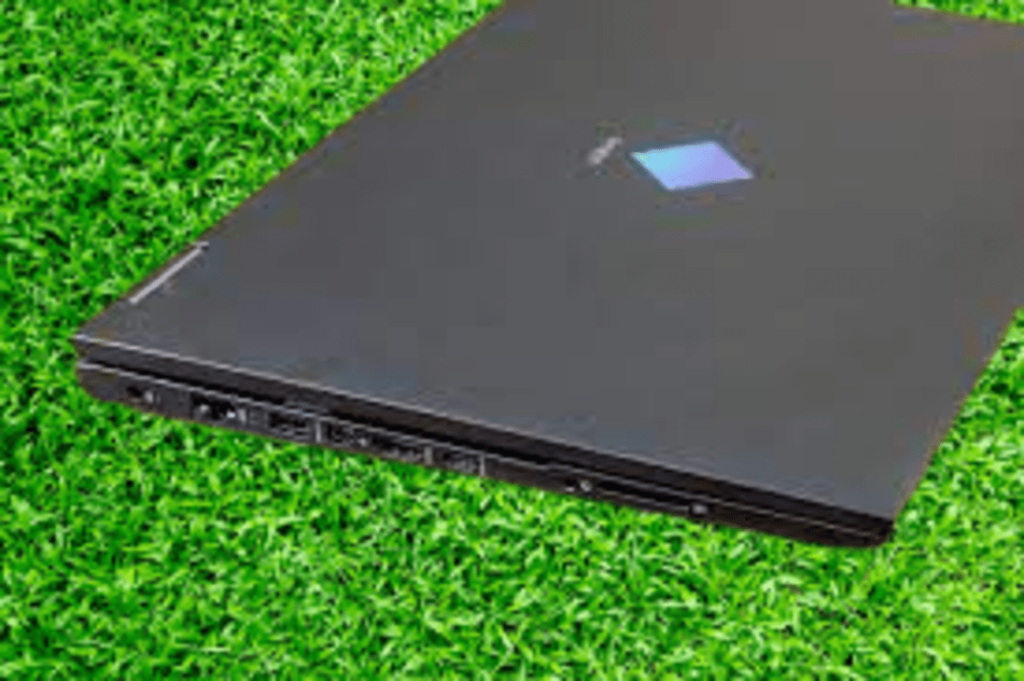
Its weight is not particularly heavy either, but it is something you will notice in your bag. Nevertheless, gaming laptops are often used on a desk or table, and when you want to carry it with you, the Omen 16 falls into the category of being quite portable. It strikes a good balance between screen size, size, and weight.
In terms of performance, there is nothing noteworthy about our test unit. Its 2,560-by-1,440-pixel native resolution is quite sharp, but even at maximum brightness, it may feel a bit lackluster in terms of maximum brightness. On paper, its specs support my subjective view as the panel’s rating is only 300 nits. However, our Omen’s screen has a speedy 240Hz refresh rate, which will be favored by e-sports gamers. (The base model of Omen 16 has a full HD panel with a 165Hz refresh rate.)
Similarly, the keyboard is also sold in several variants. The base version has simple white backlighting, while the next level includes four-zone RGB lighting that you can customize with the Omen software. The best-seen keyboard here offers per-key RGB backlighting, allowing you to change the color and effect of each key. For gaming rigs above the budget level, it is a pretty common feature – perhaps not necessary, but enjoyable.
The typing experience is overall enjoyable. Its keys have a good travel, and they feel satisfyingly bouncy rather than soft. The touchpad is quite basic, so I have very little to say about it, but it gets its job done well.
For connectivity, the Omen 16 provides two USB 3.1 Type-A ports, two USB-C Thunderbolt 4 ports, an HDMI monitor port, and headphone and Ethernet jacks. Its webcam can record in 1080p resolution, which is still an improvement above the majority of the 720p webcams currently found in portable PCs. Its image quality is quite clear compared to most competitors, though occasionally you may experience some fuzziness depending on the room’s lighting.
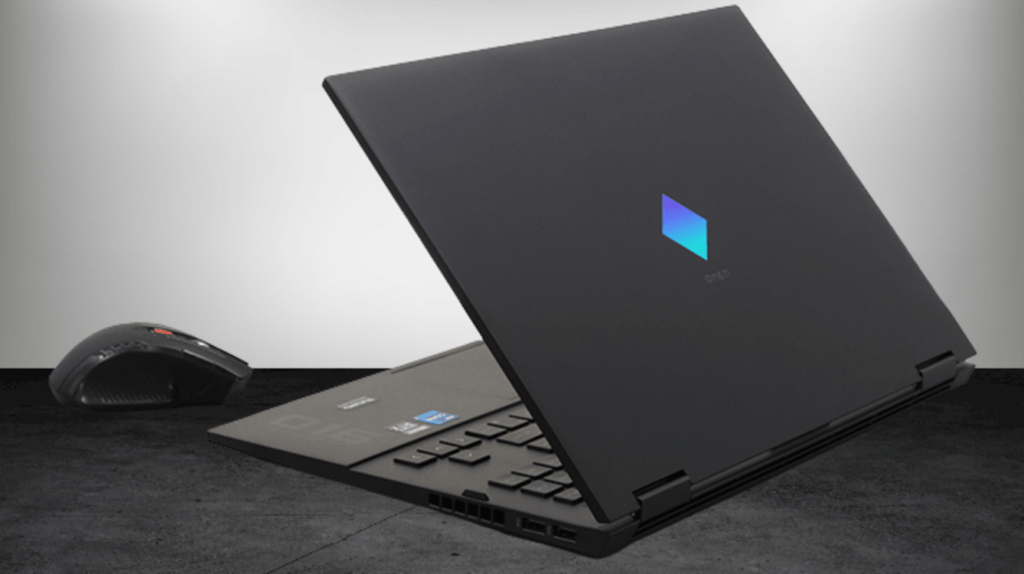
HP Omen 16 (2023) Review: Redefining the Phrase ‘Bang for the Buck’
The fresh HP Omen 16 (don’t mistake it for the flagship Omen Transcend 16) has been highlighted due to its transition to Intel 13th Gen or AMD Ryzen 7000 processors. The most affordable model starts at $1,149.99 (at the time of writing, there is a hefty discount of $799.99 on HP.com). It features a Core i5-13500H CPU, 16GB memory, an Nvidia GeForce RTX 3050 GPU, and a 512GB SSD.
As we mentioned, we pushed our test unit to its maximum potential. For $2,819.99, it has a 12GB Nvidia GeForce RTX 4080 GPU, 32GB memory, a 2TB NVMe SSD, and an Intel Core i7-13700HX processor with eight performance cores, eight efficient cores, and 24 threads.is tuned to 145 watts TGP, which is a significant factor in GPU performance. We’ve observed various benchmark differentials based on wattage capacity, and this laptop is a crucial factor in bridging the performance gap between mobile GPUs and desktop graphics cards.
A potential downside is that all models seem to use the same chassis. While the design doesn’t look wrong to me, its plain appearance and plastic construction feel less impressive than all-metal builds and attractive designs from competitors priced over $2,000 and definitely over $2,500.
To assess our Omen 16’s capability, we gathered three other high-end gaming laptops with their respective specifications listed here:
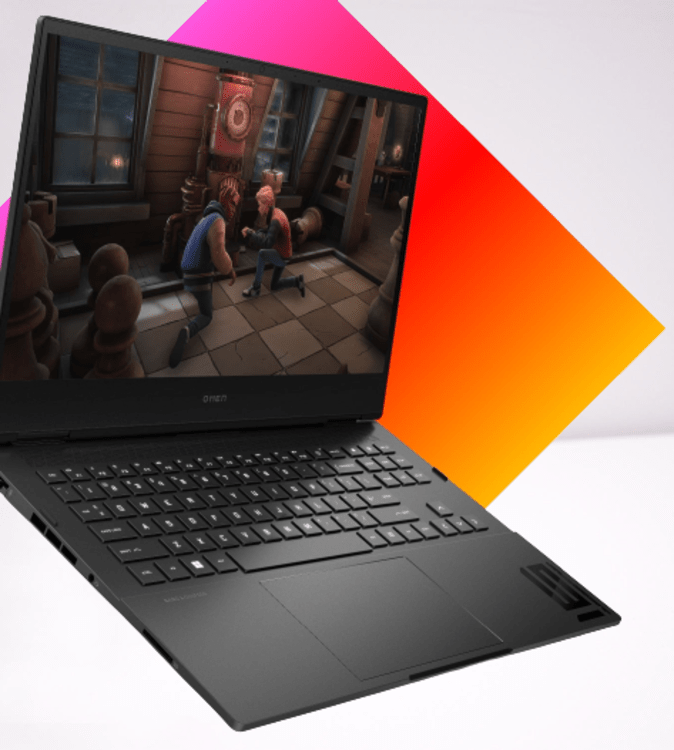
The clearest inclusion is the base Omen 16 we tested a few months ago, which not only depended on all-AMD components but also came at a price under $1,600. In contrast, the ASUS ROG Strix Scar 17 ($3,499.99) is here to show that you can get even more bang from HP if you’re willing to splurge in terms of price, power, and screen size.
Within the group, two Lenovo Legion laptops make for the most comparable contenders to the new Omen 16, catering to different needs. The Legion 5 Pro Gen 8 (as tested, $1,767.99) is an AMD-powered option with no significant changes despite a price difference of about $1,000. The Lenovo Legion 7i Gen 8 (as tested, $2,749) is our current editors’ favorite among premium gaming laptops, delivering excellent performance, as evident from the listed components above.
Quick note: We ran our benchmarks (excluding battery life) using HP Omen Control Panel software’s top performance mode, which affected the results. However, it undoubtedly boosts system performance, but you’ll have to choose between the noise of constant fan spinning and less performance. The difference between the software’s default and high-performance mode was more significant than in other systems, where there were more pedestrian throughput differences.
Productivity Testing:
For assessing productivity, we use UL’s PCMark 10, the primary benchmark for word processing, spreadsheeting, web browsing, and video conferencing, simulating real-world productivity and content creation workflows. We also run a full system drive test with PCMark 10 to gauge storage load times and throughput.
To rate a PC’s suitability for processor-intensive workloads, we focus on three other benchmarks that stress CPUs using all available cores and threads. Maxon’s Cinebench R23 presents a complex scene using the company’s Cinema 4D engine, while Geekbench 5.4 emulates popular apps, from PDF rendering and speech recognition to machine learning. Lastly, we use the open-source video transcoder Handbrake 1.4 to convert a 12-minute video clip from 4K to 1080p resolution (the shorter the time, the better).
On the whole, our final productivity tests pitted the Omen 16 as a swift performer in both general-purpose and media tasks. In direct comparisons, it outperforms the Legion Pro 5 and lags slightly behind the well-equipped Legion 7i with Core i9. This isn’t surprising; you’d expect a Core i9 system to outpace Core i7, but it’s less astonishing when you consider that the Legion 7i comes in at a slightly lower price with both systems configured here. Again, the Omen 16 is undeniably fast and well-suited for both straightforward and resource-intensive tasks, but its higher price mostly elevates its storage capacity.
In conclusion, the Omen 16 impressively delivers quick performance, excelling in both general-purpose and media workloads. While competing head-to-head, it edges out the Legion Pro 5 and falls behind the Core i9-equipped Legion 7i. It’s not surprising, considering that the Core i9 system should outperform Core i7, and it’s less astonishing when you consider that the Legion 7i comes at a slightly lower price with both systems configured here. Nonetheless, the Omen 16 is undeniably fast and well-suited for both straightforward and resource-intensive tasks, though its higher price largely enhances its storage capacity.
Graphics and Gaming Tests
We test Windows PC graphics with two DirectX 12 gaming simulations using our 3DMark, Night Raid (suitable for more casual laptops with integrated graphics), and Time Spy (suitable for gaming rigs with higher demands and separate GPUs). We also try out two OpenJL benchmarks from cross-platform GFXBench, running off-screen to adjust for different display resolutions.
Additionally, we challenge gaming laptops with three real-world tests using F1 2021, Assassin’s Creed Valhalla, and Rainbow Six Siege, all at 1080p benchmark settings. These titles represent premium titles that represent simulation, open-world action-adventure, and competitive esports shooters, respectively. We run Valhalla and Siege twice, first at medium and ultra image quality presets, and then at low and ultra quality settings. F1 is tested both with and without Nvidia’s performance-boosting DLSS anti-aliasing.
Performance Impressions
The laptop delivers solid performance overall, posting stable and competitive frame rates for demanding visuals and high-refresh-rate gaming. However, it doesn’t seem as powerful as the Legion Pro 7i, lagging behind in most cases. It’s worth noting that the Omen is also more expensive, but on paper, you’d expect it to stay ahead of the Pro 5 by a larger margin.
If you’re interested in knowing how different performance modes affect the laptop’s performance, switching the Omen to the default balanced mode, from its performance mode, slightly toned down the fan noise without significantly affecting frame rates. The difference between the default and ‘boosted’ modes is more pronounced, which we often see in such scenarios.
Battery and Display Tests:
We run a locally stored 720p video file with 50% display brightness and 100% audio volume to test the laptop’s battery life. We ensure the battery is fully charged before the test, with Wi-Fi and keyboard backlighting turned off.
Moreover, to measure color coverage and display brightness, we use Datacolor SpyderX Elite Monitor Calibration sensor and its Windows software, which shows how much of the SRGB, AdobeRGB, and DCI-P3 color gamut the panel can reproduce, and its maximum brightness in nits.
HP’s battery life is quite good here. Some super-powered gaming laptops can last a long time even without being plugged in, so we need to keep our expectations realistic, but the Omen 16 doesn’t earn any extra points for reducing this trend, though it’s not disappointing either. Our performance tests validate this: the Omen’s screen isn’t particularly bright, and its color coverage is region-specific, so there’s no reason to get overly excited about it.
| HP Omen 16 Specifications: CPU: Intel Core i7-12700H Graphics: Nvidia GeForce RTX 3070 Ti (8GB GDDR6, 150W max graphics power, 1,035 GHz boost clock) Memory: 16GB DDR5-4800 Storage: 1TB PCIe NVMe M.2 SSD Display: 16.1-inch, IPS 2560 x 1440, 165 Hz Networking: Intel Wi-Fi 6E AX211, Bluetooth 5.2 Ports: 2x Thunderbolt 4, 3x USB Type-A (5 Gbps), HDMI 2.1, Ethernet, 3.5mm headphone jack, SD card slot Camera: 720p, IR Battery: 83 WHr Power Adapter: 280 W Operating System: Windows 11 Pro Dimensions: ( WxDxH)14.53 x 9.76 x 0.89 inches / 369.32 mm x 247.90 x 22.61 mm Weight 5.29 pounds: (2.4 kg) Price (as configured): $2,139.99 | |







Please provide me with more details on the topic
I’d like to find out more? I’d love to find out more details.
Your articles are very helpful to me. May I request more information?